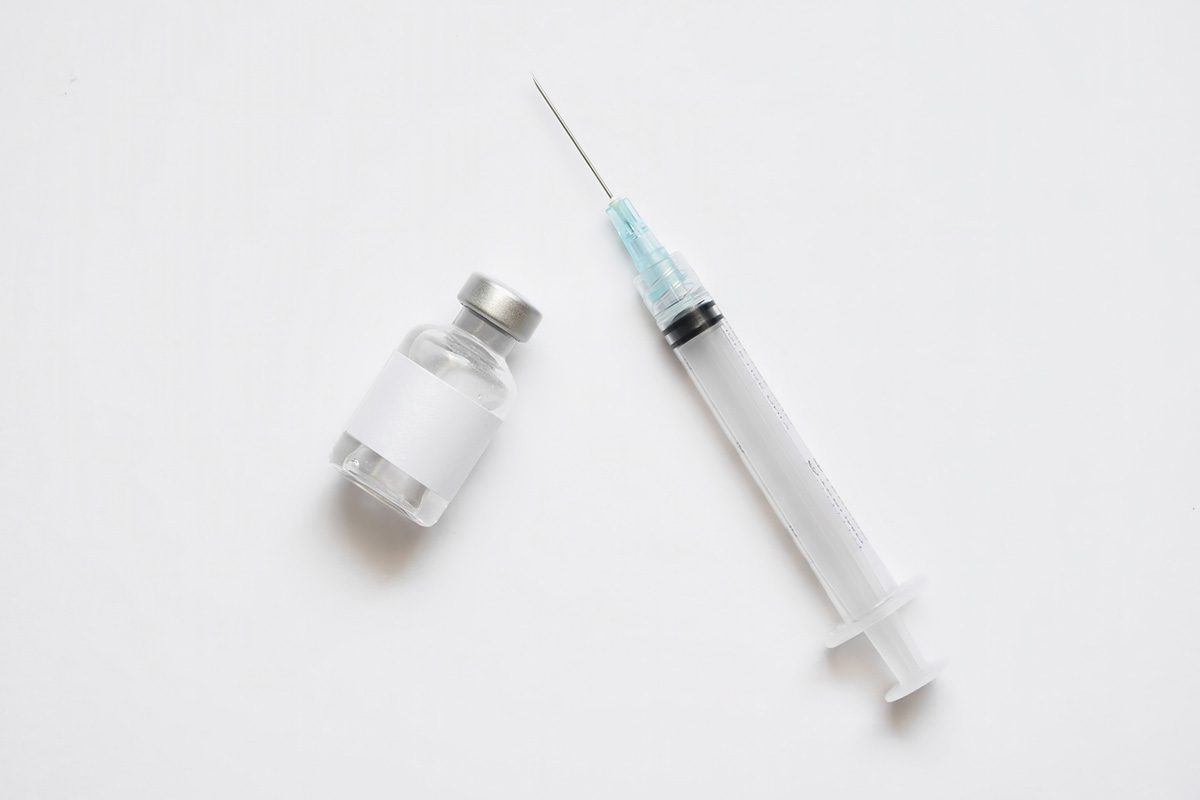ABSTRACT
Objective: Current treatment guidelines for individuals at clinical high risk (CHR) for psychosis do not recommend the prescription of antipsychotics (not even second-generation ones) as the first treatment option for preventing psychosis. Yet, recent meta-analytic evidence indicates that antipsychotic exposure in CHR is relatively widespread and associated with a higher imminent risk of transition to psychosis. Therefore, we undertook this study to better delineate which clinical characteristics of CHR individuals may lead to the choice of antipsychotic prescription and whether it identifies a subgroup at higher risk for conversion to psychosis.
Methods: Consecutively referred CHR individuals (N = 717) were assessed for demographic and clinical characteristics and followed up for 3 years (200 did not reach the end of the follow-up time) from 2016 to 2021. The sample was then dichotomized, on the basis of antipsychotic prescription, to prescribed (CHRAP+, n = 492) or not-prescribed (CHRAP–, n = 225) groups, which were subsequently compared for sociodemographic and clinical characteristics. The risks of conversion to psychosis in CHRAP+ versus CHRAP– groups were tested via survival analysis.
Results: Of the 717 CHR individuals, 492 (68.62%) were prescribed antipsychotics; among these antipsychotics, the highest proportion used was for aripiprazole (n = 152), followed by olanzapine (n = 106), amisulpride (n = 76), and risperidone (n = 64). The CHRAP+ group had younger age (t = 2.138, P = .033), higher proportion of female individuals (χ2 = 5.084, P = .024), psychotic symptoms of greater severity (t = 7.910, P < .001), and more impaired general function (t = 5.846, P < .001) than the CHRAP– group. The CHRAP+ group had greater risk for conversion to psychosis (27.0% in the CHRAP+ group vs 10.9% in the CHRAP– group, P < .001). Factors related to positive symptoms were the most likely to influence doctors’ decision-making regarding prescripton of antipsychotics, without influence of age, sex, and education levels.
Conclusions: Clinicians may prescribe antipsychotics mainly based on the severity of positive and disorganization symptoms of CHR individuals. The CHRAP+ group was associated with a higher risk of conversion to psychosis. In pragmatic terms, this finding indicates that baseline antipsychotic prescription in CHR cohorts is a warning flag for higher incipient risk of psychosis and designates as hyper-CHR subgroup as compared to antipsychotic-naive CHR.
Trial Registration: ClinicalTrials.gov identifier: NCT04010864
Members Only Content
This full article is available exclusively to Professional tier members. Subscribe now to unlock the HTML version and gain unlimited access to our entire library plus all PDFs. If you’re already a subscriber, please log in below to continue reading.
References (43)

- Fusar-Poli P, Borgwardt S, Bechdolf A, et al. The psychosis high-risk state: a comprehensive state-of-the-art review. JAMA Psychiatry. 2013;70(1):107–120. PubMed CrossRef
- Fusar-Poli P, Davies C, Solmi M, et al. Preventive treatments for psychosis: umbrella review (just the evidence). Front Psychiatry. 2019;10:764. PubMed CrossRef
- Fusar-Poli P, Salazar de Pablo G, Correll CU, et al. Prevention of psychosis: advances in detection, prognosis, and intervention. JAMA Psychiatry. 2020;77(7):755–765. PubMed CrossRef
- Woods SW, Bearden CE, Sabb FW, et al. Counterpoint. early intervention for psychosis risk syndromes: minimizing risk and maximizing benefit. Schizophr Res. 2021;227:10–17. PubMed
- Schultze-Lutter F, Michel C, Ruhrmann S, et al. Prevalence and clinical significance of DSM-5-attenuated psychosis syndrome in adolescents and young adults in the general population: the Bern Epidemiological At-Risk (BEAR) study. Schizophr Bull. 2014;40(6):1499–1508. PubMed CrossRef
- Leucht S, Crippa A, Siafis S, et al. Dose-response meta-analysis of antipsychotic drugs for acute schizophrenia. Am J Psychiatry. 2020;177(4):342–353. PubMed CrossRef
- McCutcheon RA, Pillinger T, Mizuno Y, et al. The efficacy and heterogeneity of antipsychotic response in schizophrenia: a meta-analysis. Mol Psychiatry. 2021;26(4):1310–1320. PubMed CrossRef
- McGorry PD, Yung AR, Phillips LJ, et al. Randomized controlled trial of interventions designed to reduce the risk of progression to first-episode psychosis in a clinical sample with subthreshold symptoms. Arch Gen Psychiatry. 2002;59(10):921–928. PubMed CrossRef
- Woods SW, Breier A, Zipursky RB, et al. Randomized trial of olanzapine versus placebo in the symptomatic acute treatment of the schizophrenic prodrome. Biol Psychiatry. 2003;54(4):453–464. PubMed CrossRef
- McGlashan TH, Zipursky RB, Perkins D, et al. Randomized, double-blind trial of olanzapine versus placebo in patients prodromally symptomatic for psychosis. Am J Psychiatry. 2006;163(5):790–799. PubMed CrossRef
- Zhang T, Xu L, Tang X, et al. Real-world effectiveness of antipsychotic treatment in psychosis prevention in a 3-year cohort of 517 individuals at clinical high risk from the SHARP (ShangHai at risk for psychosis). Aust N Z J Psychiatry. 2020;54(7):696–706. PubMed CrossRef
- Galletly C, Castle D, Dark F, et al. Royal Australian and New Zealand College of Psychiatrists clinical practice guidelines for the management of schizophrenia and related disorders. Aust N Z J Psychiatry. 2016;50(5):410–472. PubMed CrossRef
- Taylor M, Perera U. NICE CG178 psychosis and schizophrenia in adults: treatment and management—an evidence-based guideline? Br J Psychiatry. 2015;206(5):357–359. PubMed CrossRef
- Raballo A, Poletti M. Overlooking the transition elephant in the ultra-high-risk room: are we missing functional equivalents of transition to psychosis? Psychol Med. 2019;29:1–4. PubMed
- Raballo A, Poletti M, Preti A. Meta-analyzing the prevalence and prognostic effect of antipsychotic exposure in clinical high-risk (CHR): when things are not what they seem. Psychol Med. 2020;50(16):2673–2681. PubMed CrossRef
- Nelson B, Yung AR. Can clinicians predict psychosis in an ultra high risk group? Aust N Z J Psychiatry. 2010;44(7):625–630. PubMed CrossRef
- McGorry PD, Nelson B, Amminger GP, et al. Intervention in individuals at ultra-high risk for psychosis: a review and future directions. J Clin Psychiatry. 2009;70(9):1206–1212. PubMed CrossRef
- Wu G, Gan R, Li Z, et al. Real-world effectiveness and safety of antipsychotics in individuals at clinical high-risk for psychosis: study protocol for a prospective observational study (ShangHai at risk for psychosis-phase 2). Neuropsychiatr Dis Treat. 2019;15:3541–3548. PubMed CrossRef
- Miller TJ, McGlashan TH, Rosen JL, et al. Prospective diagnosis of the initial prodrome for schizophrenia based on the Structured Interview for Prodromal Syndromes: preliminary evidence of interrater reliability and predictive validity. Am J Psychiatry. 2002;159(5):863–865. PubMed CrossRef
- Miller TJ, McGlashan TH, Rosen JL, et al. Prospective diagnosis of the initial prodrome for schizophrenia based on the Structured Interview for Prodromal Syndromes: preliminary evidence of interrater reliability and predictive validity. Am J Psychiatry. 2002;159(5):863–865. PubMed CrossRef
- Aas IH. Global Assessment of Functioning (GAF): properties and frontier of current knowledge. Ann Gen Psychiatry. 2010;9(1):20. PubMed CrossRef
- Raballo A, Larøi F. Psychosis risk syndrome and DSM-5: time for a dimensional approach to at-risk mental states? Clin Schizophr Relat Psychoses. 2011;5(3):155–158. PubMed CrossRef
- Raballo A, Nelson B, Thompson A, et al. The comprehensive assessment of at-risk mental states: from mapping the onset to mapping the structure. Schizophr Res. 2011;127(1-3):107–114. PubMed CrossRef
- Preti A, Raballo A, Meneghelli A, et al. Antipsychotics are related to psychometric conversion to psychosis in ultra-high-risk youth [online ahead of print May 5, 2021]. Early Interv Psychiatry. 2021;eip.13158. PubMed CrossRef
- Zhang T, Xu L, Wei Y, et al. When to initiate antipsychotic treatment for psychotic symptoms: at the premorbid phase or first episode of psychosis? Aust N Z J Psychiatry. 2021;55(3):314–323. PubMed CrossRef
- Schlosser DA, Jacobson S, Chen Q, et al. Recovery from an at-risk state: clinical and functional outcomes of putatively prodromal youth who do not develop psychosis. Schizophr Bull. 2012;38(6):1225–1233. PubMed CrossRef
- Perez VB, Woods SW, Roach BJ, et al. Automatic auditory processing deficits in schizophrenia and clinical high-risk patients: forecasting psychosis risk with mismatch negativity. Biol Psychiatry. 2014;75(6):459–469. PubMed CrossRef
- Bang M, Park JY, Kim KR, et al. Psychotic conversion of individuals at ultra-high risk for psychosis: the potential roles of schizotypy and basic symptoms. Early Interv Psychiatry. 2019;13(3):546–554. PubMed CrossRef
- NICE NIfHaCE. Psychosis and schizophrenia in adults: prevention and management. Clinical guideline. NICE website. nice.org.uk/guidance/cg178/chapter/1-recommendations. 2014. Accessed June 21, 2021.
- Buchanan RW, Kreyenbuhl J, Kelly DL, et al; Schizophrenia Patient Outcomes Research Team (PORT). The 2009 schizophrenia PORT psychopharmacological treatment recommendations and summary statements. Schizophr Bull. 2010;36(1):71–93. PubMed CrossRef
- Bretler T, Weisberg H, Koren O, et al. The effects of antipsychotic medications on microbiome and weight gain in children and adolescents. BMC Med. 2019;17(1):112. PubMed CrossRef
- Schultze-Lutter F, Schimmelmann BG, Flückiger R, et al. Effects of age and sex on clinical high-risk for psychosis in the community. World J Psychiatry. 2020;10(5):101–124. PubMed CrossRef
- Kelleher I, Keeley H, Corcoran P, et al. Clinicopathological significance of psychotic experiences in non-psychotic young people: evidence from four population-based studies. Br J Psychiatry. 2012;201(1):26–32. PubMed CrossRef
- Schimmelmann BG, Michel C, Martz-Irngartinger A, et al. Age matters in the prevalence and clinical significance of ultra-high-risk for psychosis symptoms and criteria in the general population: findings from the BEAR and BEARS-kid studies. World Psychiatry. 2015;14(2):189–197. PubMed CrossRef
- Ju M, Wang J, Xu L, et al. Frequency of self-reported psychotic symptoms among 2,542 outpatients at their first visit for mental health services. Psychiatry. 2021;84(1):57–67. PubMed CrossRef
- Zhang TH, Li HJ, Woodberry KA, et al. Two-year follow-up of a Chinese sample at clinical high risk for psychosis: timeline of symptoms, help-seeking and conversion. Epidemiol Psychiatr Sci. 2017;26(3):287–298. PubMed CrossRef
- Lencz T, Smith CW, Auther AM, et al. The assessment of “prodromal schizophrenia”: unresolved issues and future directions. Schizophr Bull. 2003;29(4):717–728. PubMed CrossRef
- Tso IF, Taylor SF, Grove TB, et al. Factor analysis of the Scale of Prodromal Symptoms: data from the early detection and intervention for the prevention of psychosis program. Early Interv Psychiatry. 2017;11(1):14–22. PubMed CrossRef
- Piskulic D, Addington J, Cadenhead KS, et al. Negative symptoms in individuals at clinical high risk of psychosis. Psychiatry Res. 2012;196(2-3):220–224. PubMed CrossRef
- Healey KM, Penn DL, Perkins D, et al. Latent profile analysis and conversion to psychosis: characterizing subgroups to enhance risk prediction. Schizophr Bull. 2018;44(2):286–296. PubMed CrossRef
- Marder SR, Galderisi S. The current conceptualization of negative symptoms in schizophrenia. World Psychiatry. 2017;16(1):14–24. PubMed CrossRef
- Fusar-Poli P, Cappucciati M, Borgwardt S, et al. Heterogeneity of psychosis risk within individuals at clinical high risk: a meta-analytical stratification. JAMA Psychiatry. 2016;73(2):113–120. PubMed CrossRef
- Zhang T, Xu L, Li H, et al. Individualized risk components guiding antipsychotic delivery in patients with a clinical high risk of psychosis: application of a risk calculator. Psychol Med. 2021;17:1–10. PubMed CrossRef





